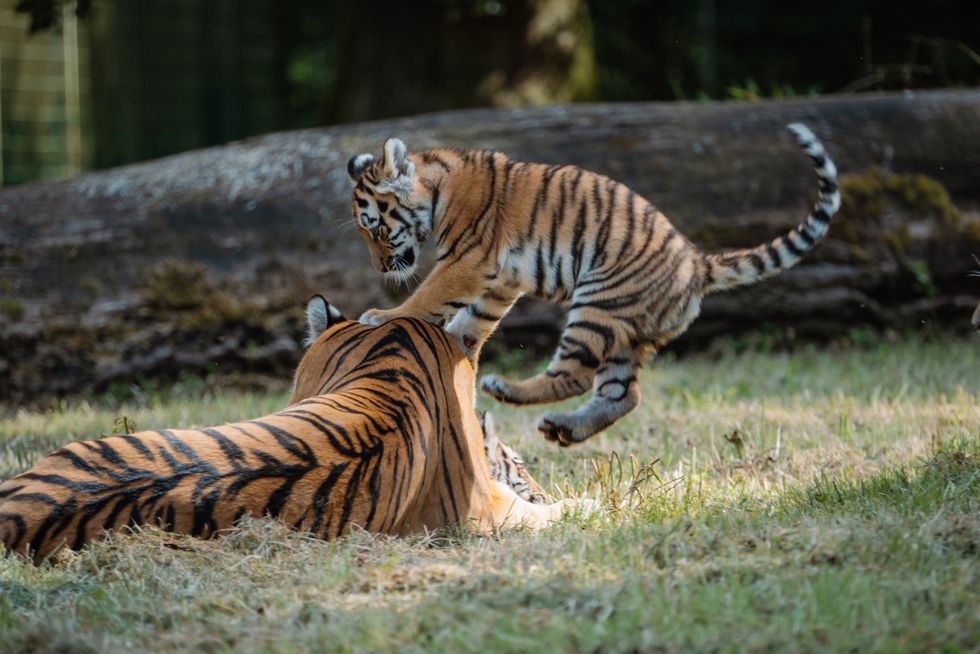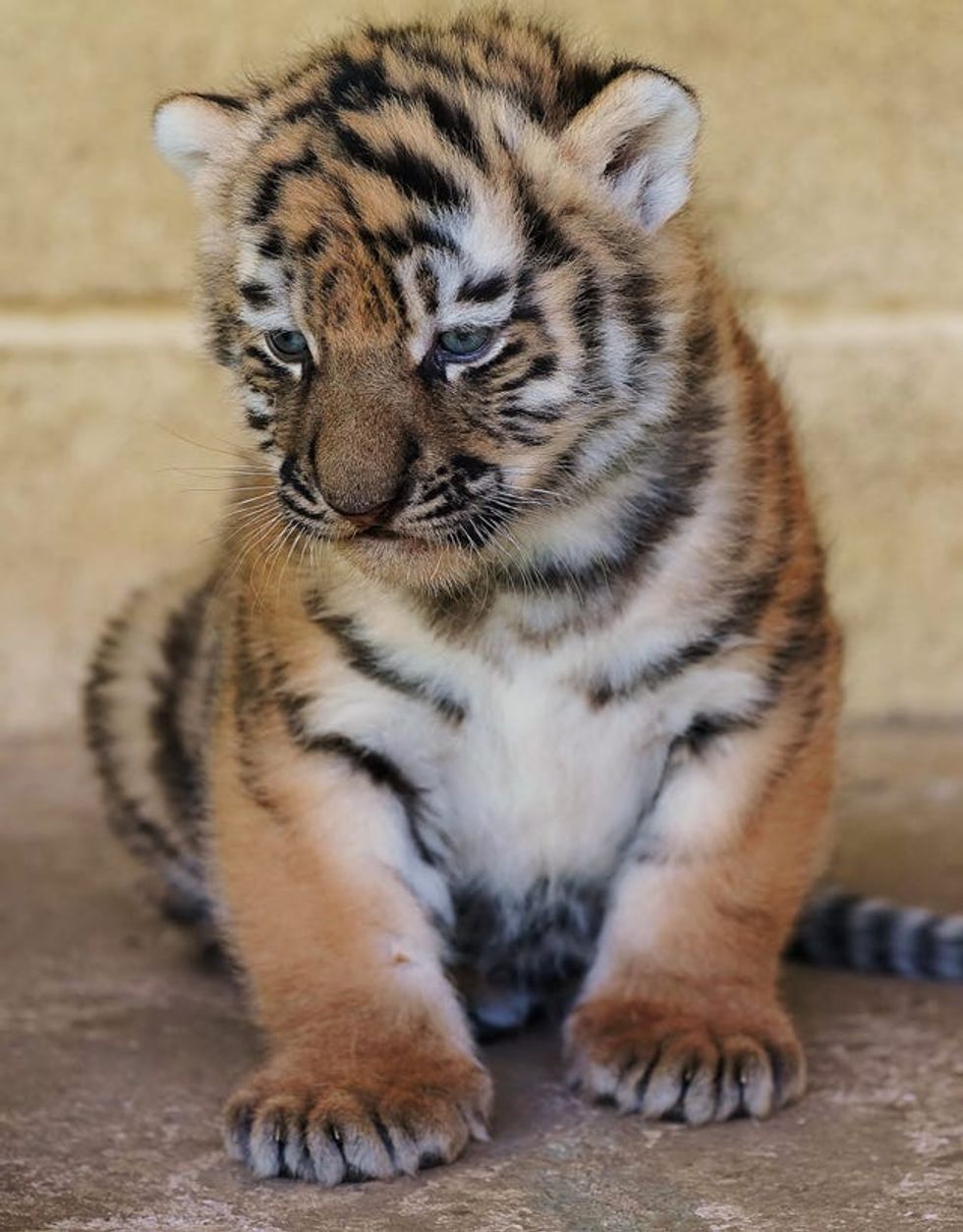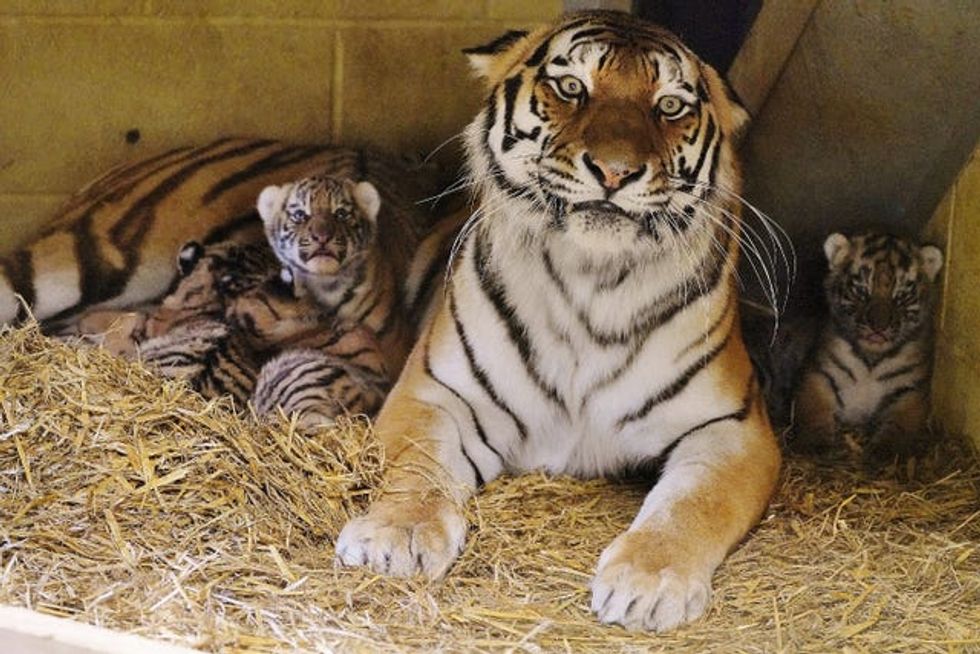
Four rare tiger cubs have been introduced to the outdoors for the first time.
The Amur cubs, who were born at Longleat Safari Park in Wiltshire in May, were allowed into a paddock with their mother Yana this week.
Keepers described how Yana kept a close eye on the four cubs, who have had all of their vaccinations, as they romped in the grass.
Eloise Kilbane, of Longleat, said: “We have some very happy cubs.
“Yana went out first and was rolling around, scratch and scent marking and checking it was all okay before she called the cubs out. All four came out and were exploring the paddock.

“Days like this are what keepers dream about. Your animals exploring for the first time while showing the success of the breeding programme as they are happy and healthy in their environment.”
Amur tigers are one of the most endangered animals in the world, with only around 450 remaining in the wild.
The four cubs were born to mother Yana and father Red, both nine years old.
They are Yana’s second litter, as she gave birth to two cubs called Rusty and Yuki in 2019.
It is expected that the cubs will go into the main paddock at Longleat in late summer.

Darren Beasley, head of animal operations at Longleat, said their introduction to the outside world will be a gradual process led by Yana.
“We want to make sure the cubs are confident and crucially Yana is happy with where they can go,” he said.
“We will be letting them out for a short period each day in the paddock close to their house so they get used to the smells and different textures before moving them to an area which can be seen from the Safari Park.
“We will share details of this so visitors know when they will be able to look out for them.”
Amur tigers, which are native to the far east of Russia, are the largest of the big cats and can weigh up to 300kg.
The species was on the brink of extinction in the 1940s, due to hunting and logging. It is believed the population fell as low as just 20 to 30 animals at one stage.













